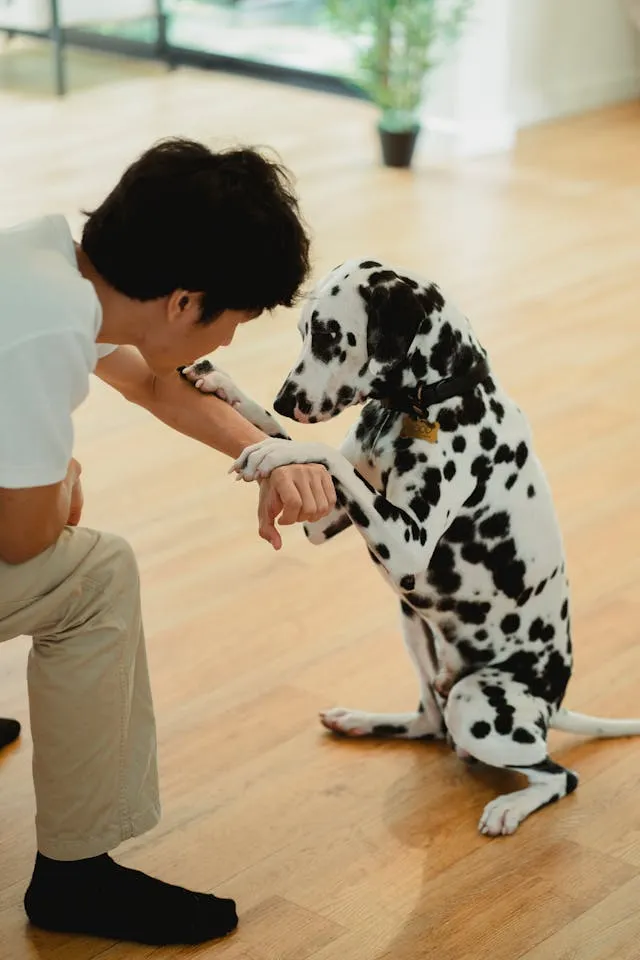The life cycles of dogs reveal a heartwarming journey from playful beginnings to wise companionship. Every dog experiences several distinct stages — from the curious puppy discovering the world, to the energetic adult full of loyalty and love, and finally, the gentle senior enjoying a slower pace of life.
Table of Contents
Understanding these stages helps dog owners provide the right care, training, and nutrition at each phase. Each part of a dog’s life comes with its own joys and challenges, shaping the deep bond between humans and their furry friends. In this guide, we’ll explore the life cycles of dogs, highlighting what happens at every stage and how you can support your pet’s growth, health, and happiness throughout their lifetime.
What Is the Life Cycle of a Dog?
The life cycle of a dog refers to the different stages a dog passes through from birth to old age. Just like humans, dogs experience physical, emotional, and behavioral changes as they grow. Generally, a dog’s life is divided into four main stages — puppyhood, adolescence, adulthood, and senior years.
Each stage has unique characteristics that affect how a dog eats, behaves, and interacts with its environment. Most dogs live an average of 10 to 15 years, although smaller breeds often live longer than larger ones. Understanding the life cycles of dogs helps pet owners provide proper care, training, and attention to keep their companions healthy and happy throughout their entire lives.
Stage 1: Puppyhood (0–6 Months)

The first stage in the life cycles of dogs is puppyhood, a period filled with rapid growth, curiosity, and learning. From birth to around six months, puppies explore the world with endless energy and enthusiasm. During this stage, they begin to develop their senses, coordination, and social skills. Proper care and early training are crucial to building good habits and trust.
Puppies also need a balanced diet rich in nutrients to support their fast-growing bodies. This is the time for essential vaccinations, regular vet visits, and plenty of positive interactions with people and other pets. Puppyhood lays the foundation for a dog’s lifelong behavior, health, and emotional well-being — making it one of the most important stages in a dog’s entire life cycle.
Stage 2: Adolescence (6–18 Months)

The second stage in the life cycles of dogs is adolescence, often known as the “teenage phase.” Between six and eighteen months, dogs begin to mature physically and mentally. They are full of energy, curiosity, and sometimes a bit of stubbornness as they test boundaries and explore their independence.
During this stage, consistent training and patience are essential to guide proper behavior and discipline. Many dogs will also experience hormonal changes, marking the beginning of sexual maturity. Providing regular exercise, socialization, and mental stimulation helps channel their energy in positive ways. While this phase can be challenging, it’s also when strong bonds and lifelong habits are formed — shaping your dog into a well-behaved and loyal adult companion.
Stage 3: Adulthood (1–7 Years)

The third stage in the life cycles of dogs is adulthood, a time when dogs reach full physical and mental maturity. Between one and seven years of age, most dogs are strong, confident, and active. Their personalities are well-developed, and they often show loyalty, discipline, and emotional stability.
During this stage, maintaining a balanced diet, regular exercise, and routine vet check-ups is vital for long-term health. Adult dogs benefit from continued training and engaging activities to keep their minds sharp. Depending on breed and size, some dogs may also reach their breeding maturity during this period. The adulthood stage is often considered the prime of a dog’s life — a phase of companionship, energy, and lasting bonds with their owners.
Stage 4: Senior Years (7+ Years)

The final stage in the life cycles of dogs is the senior years, beginning around the age of seven, though this can vary by breed and size. During this stage, dogs tend to slow down, rest more, and may experience age-related changes such as reduced mobility, grey fur, or weaker eyesight. Senior dogs need extra care, comfort, and regular veterinary check-ups to monitor their health.
A diet designed for older dogs, gentle exercise, and a warm, stress-free environment can help maintain their quality of life. While their energy may fade, their loyalty and affection remain stronger than ever. This stage is a precious time to provide love, patience, and support, ensuring your furry friend enjoys a happy and peaceful life in their golden years.
Factors Affecting Dog Life Cycle

Several factors influence how long and how well a dog progresses through the life cycles of dogs. The most significant factor is breed and size — smaller breeds like Chihuahuas or Dachshunds often live longer than larger breeds such as Great Danes or Rottweilers. Genetics also play a key role, as dogs with strong hereditary health tend to enjoy longer lifespans.
In addition, nutrition and diet directly impact a dog’s energy, growth, and resistance to illness. Regular veterinary care, vaccinations, and preventive health check-ups help detect issues early and keep dogs healthy at every stage. Lastly, a safe environment, exercise, and emotional well-being greatly affect how happily and healthily a dog moves through each phase of life. Providing proper care ensures your pet enjoys every stage of their journey.
How to Care for Your Dog Through Each Life Stage

Caring for a dog throughout the life cycles of dogs requires understanding the unique needs of each stage.
- Puppyhood (0–6 Months): Focus on vaccinations, proper nutrition, socialization, and basic training to build a strong foundation.
- Adolescence (6–18 Months): Provide consistent training, mental stimulation, and plenty of exercise to manage energy and encourage good behavior.
- Adulthood (1–7 Years): Maintain a balanced diet, regular exercise, and routine vet visits to support health and longevity. Engage your dog in mental and physical activities to prevent boredom.
- Senior Years (7+ Years): Adjust diet for aging needs, offer gentle exercise, monitor for health issues, and provide comfort and emotional support.
By tailoring care to each stage, you ensure your dog remains happy, healthy, and energetic throughout their life, creating a strong, lifelong bond.
Conclusion
Understanding the life cycles of dogs helps every pet owner provide the right care, nutrition, and love at each stage of their furry friend’s life. From the playful days of puppyhood to the calm and gentle senior years, every phase is special and full of learning. By recognizing your dog’s changing needs and supporting them through each stage, you can ensure a happier, healthier, and longer life together. Cherish every moment — because every stage of your dog’s journey is a beautiful part of your shared bond.
FAQs
What is the life cycle of a dog?
The life cycle of a dog has four main stages — puppyhood, adolescence, adulthood, and senior years. Each stage has unique needs for growth, care, and health.
What is the 7 7 7 rule for dogs?
The 7 7 7 rule means dogs age differently from humans — roughly 7 dog years for every human year, but this can vary depending on the breed and size of the dog.
What are the stages of a dog’s cycle?
The life cycle of a dog has four main stages — puppyhood, adolescence, adulthood, and senior years. Each stage has unique needs for growth, care, and health.





